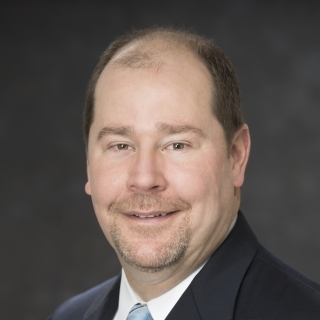Scott A. Hamilton

Dr. Scott A. Hamilton is principal staff in the Communication Systems Division at MIT Lincoln Laboratory. He joined Lincoln Laboratory in 2000 as technical staff in the Optical Communications Group. His early work focused on all-optical time-division-multiplexed architectures and the functions needed to implement them, culminating in a successful demonstration of these capabilities at more than 100 gigabits per second. After being promoted to assistant leader in 2005, Hamilton began maturing ultrasensitive receivers for free-space laser communications (lasercom), which ultimately enabled NASA's groundbreaking Lunar Lasercom Demonstration.
Hamilton was promoted to associate leader of the Advanced Lasercom Systems and Operations Group in 2009 and became the lead system architect for an optical relay study that formed the basis for NASA’s on-orbit Lasercom Relay Demonstration and the accompanying international waveform standards. From 2012 to 2024, Hamilton led the Optical and Quantum Communications Technology Group, overseeing the group through its execution of several successful lasercom prototyping programs for NASA. Most recently, he has focused on new applications of optical communications technologies, including underwater lasercom and quantum communications. Hamilton led a team with expertise in actively tracked, narrow-beam lasercom to design a low-power terminal for both undersea communication and communication through the challenging air-sea interface, with open ocean demonstrations yielding best-in-class performance and follow-on efforts with the Navy. Hamilton also developed a quantum technology road map for entanglement distribution across both fiber and free space. In executing this road map, the group has made significant progress on many of the required component technologies, including a fiber test bed connecting the Laboratory with MIT and Harvard and a free-space quantum networking test bed at the Laboratory. The success of these efforts has led to a major national proposal for a long-range space-based demonstration of entanglement distribution.
Hamilton is active in internal and external professional service roles. He held leadership roles on the Laboratory’s Advanced Concepts Committee and the New Technology Initiative Board, and is a member of the MIT Center for Quantum Engineering. He has an extensive portfolio of publications, patents, and conference presentations, and has served as the associate editor of the IEEE Journal of Quantum Electronics. He has also served as a technical organizer for five international conferences, including the Optical Fiber Communication Conference — the world’s largest optical communications conference.
Hamilton holds BS (1993), MS (1996), and PhD (1999) degrees in electrical engineering from the University of California, Davis. Prior to joining the Laboratory, he worked at the China Lake Naval Air Warfare Center and Central Intelligence Agency.